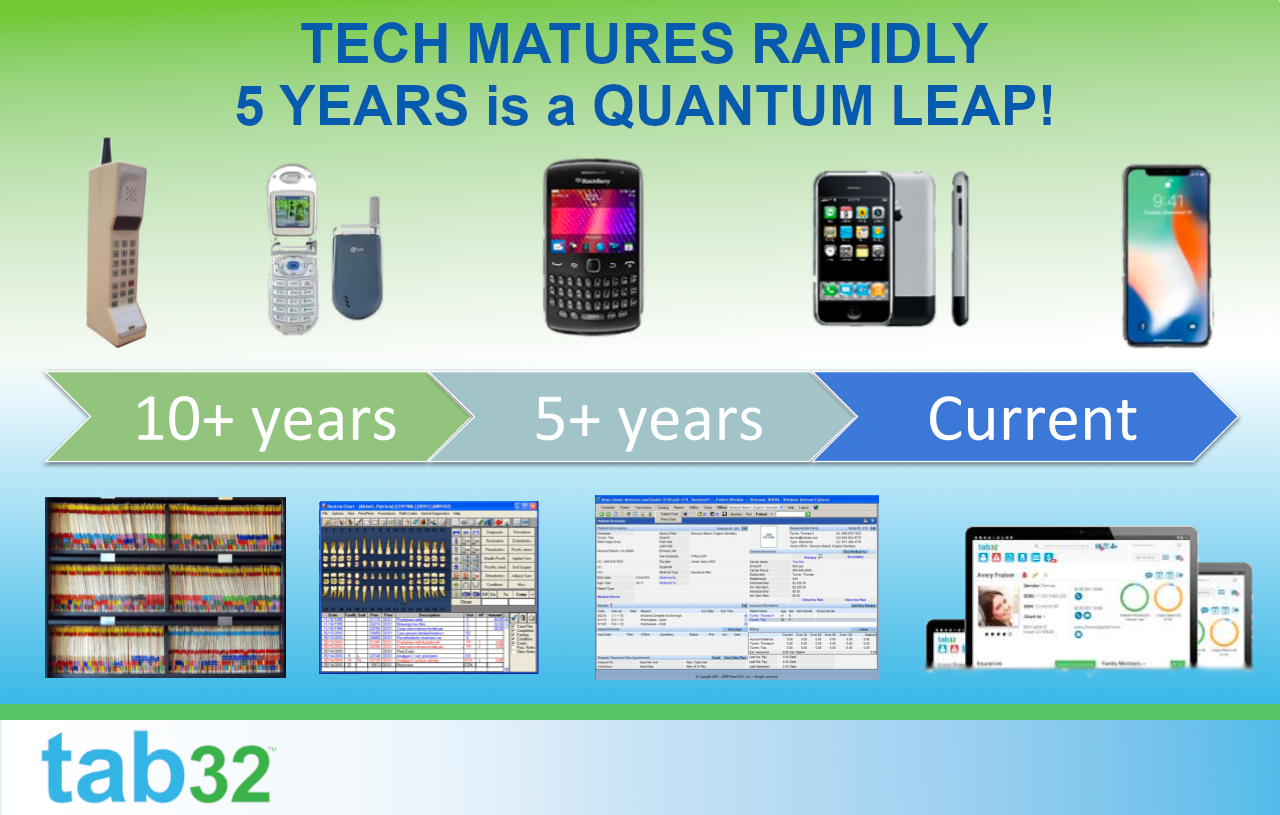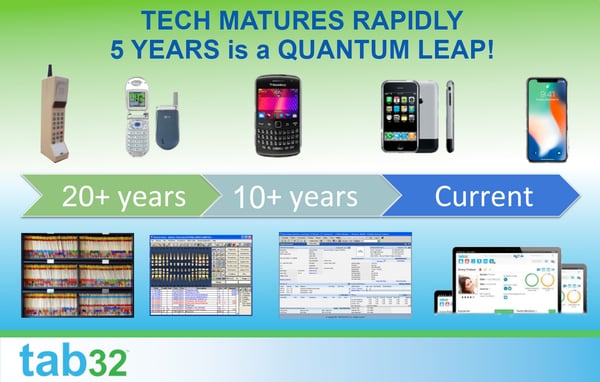
What cell phone are you using now? While there may be a few of us clinging to the simplicity of flip phones, most have moved on from that dated technology. Are you using the flip phone of dental office software?
This seriously antiquated and high-risk legacy software uses on-premises client-server installation of practice management and needs active hardware and support management.
Not only is the software high-risk, but this kind of software also needs supplemental software to run the practice: e.g. patient communication, practice reputation, imaging, claims, attachments and analytics.
The need for multiple vendors and managing hardware and software is daunting, especially with the tasks of active data management and backups, anti-virus, etc. Not to mention the dire risk of going out of business due to viruses like ransomware.
Many offices have “upgraded” to version 2.0, which are web-app technologies “simply” written to replace version 1.0 using web application. These newer versions claim to be cloud-based or mobile-friendly. But the truth is they are at least ten years old and almost as risky as version 1.0.
We hear arguments like “software is beautiful” and “the company has been around for a while”. The former argument begs a simple question: is beautiful software more important or a higher priority than simplicity and ease-of-use?
And, while it might seem a safer choice to commit to technology that’s "been around for a while", is that really better? For example, do you remember web-based maps from MapQuest? Maybe not, because now they’ve been replaced by Google’s cloud-based platform which seamlessly works on any browser, phones, cars, and much more.
Further, strictly technical, limitation of such software arises from outdated technologies used by version 2.0 vendors like Adobe Flash and JADE Graphical Interfaces. These technologies have reached the end-of-life—popularly known in technology space as “obsolete”— like Walkman or even iPod for that matter.
It’s beyond the scope of this article to explain technical details, but the right question to ask is: will this 2.0 technology be around in the next 10 years unless fully re-written? You can think of an analogy of sticking multiple band-aids on a wound which seriously needs stitches.
What does the version of your software have to do with your practice growth? Is ten-year-old version 2.0 really your best option rather than opting for the up-to-date iPhone X?
The version 2.0 technologies were the replacement of version 1.0, i.e. merely replacing client-server practice management to web-based practice management. A Band-aid, and that means version 2.0 still need lots of work to make it the best option. Not only does it need add-on components like patient communication, imaging, claims, attachments, and analytics on a daily basis, it’s also susceptible to viruses, hacking, and other breaches. This makes it even more expensive to use and maintain compared to version 1.0.

Let’s look at version 3.0: the software is built ground-up from cloud-based technologies, which is accessed from anywhere, and from any device. Most importantly, since these are large farms of the highly scalable multi-tenant cloud platform, it allows serving a customer at lower price points.
Some version 2.0 vendors also falsely think that just because their application runs on the web, this automatically qualifies it to be a cloud because it is hosted on Amazon cloud infrastructure. This is not always the case. For a web application to evolve into a cloud, it must exhibit certain properties such as true multi-tenancy, virtualization technology, data storage, and scalability, which plays a starring role for cloud era applications. Most web applications will need significant re-engineering to even qualify—including version 2.0 technology stack.
Additionally, due to up-to-date technology stack of version 3.0, it provides easy development and integration of add-on features like patient communication, imaging, claims, attachments and analytics at lower price points.
It might be difficult for a layman to distinguish the difference between version 2.0 and version 3.0. So aside from asking for the age of a technology (or company), check their price points, watch for additional add-on charges, and multiple software vendor contracts. Each of which overall makes the complete solution you need expensive.
Be very wary of version 1.0 or version 2.0 vendors selling as enterprise cloud-based solution. It is merely a marketing gimmick and significantly lacks the technology stack needed for version 3.0.
You need a complete, secure, cloud based dental practice management software that you can access from any device, anywhere. Learn more about how tab32 can help your practice grow with version 3.0 software.
These Stories on Data Management
No Comments Yet
Let us know what you think